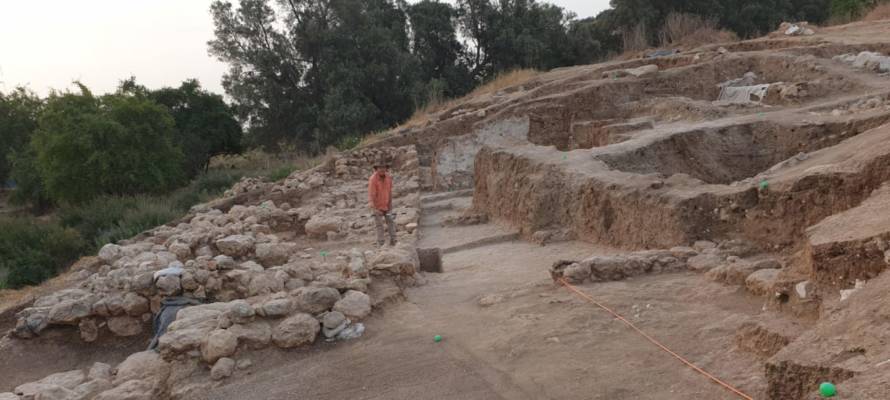Archaeologists have unearthed a 3,000-year-old Philistine city underneath the preexisting dig of the ancient city of Gath.
Archaeologists recently stumbled upon a massive 3,000-year-old early Philistine city underneath the well-excavated ancient city of Gath, located in the Judean foothills between Jerusalem and Ashkelon, reported Ha’aretz.
“I’ve been digging here for 23 years, and this place still manages to surprise me,” said Aren Maeir, a professor of archaeology at Bar-Ilan University, who led the expedition. “All along we had this older, giant city that was hiding just a meter under the city we were digging.”
During the 10th-19th centuries BCE, the city of Gath, mentioned several times in the Bible, was the largest in the land of Israel. The discovery helps to confirm biblical narrative about the city, which was captured and destroyed by King Hazael of Aram-Damascus in 830 BCE.
Gath is mentioned as a place that briefly hosted the Ark of the Covenant after the Philistines captured it from the Israelites (1 Samuel 5:8). It is also where David, the future king of the Israelites, sought refuge twice from King Saul.
The discovery may provide evidence linking the early Philistine city to the biblical giant Goliath, who was from Gath.
Pottery found in the area dates back to the early Iron Age (11th century BCE) or possibly earlier. Some of the ceramic shards date back to the ninth century BCE, a century after David’s time, and carry the etymologically similar name “Goliath.”
The massive walls measure at least four meters in thickness. This seem to match the biblical narrative relating to the ancient battle between the Philistines of Gath and King Saul’s Israelite Kingdom (1 Samuel 17).
“Whatever it is, it’s enormous,” Maeir told Ha’aretz during a recent tour of the site. “It’s as if the site of Gath in the early Iron Age dwarfed the later city.”
The archaeologists accidentally discovered the older and much larger ancient city during this summer’s digging campaign, which ended this month. They had thought to investigate the foundations of large terraces located in Gath’s lower city that were inhabited during the Iron Age.
“This was the largest Philistine city and probably one of the largest in the Iron Age Levant,” Maeir explained. “Larger cities were only found outside the Levant, such as in Egypt and Mesopotamia.”
Thus far, only small sections of the early Iron Age city of Gath have been uncovered. Maeir’s team plans to continue exploring the area over the coming years with hopes of finding clear evidence for the age of the town.
“So we still don’t know a lot about why a new city was built on top of the old one, with a different orientation for the buildings,” the archaeologist says. “But one thing is certain: we are slowly awakening a sleeping giant.”










